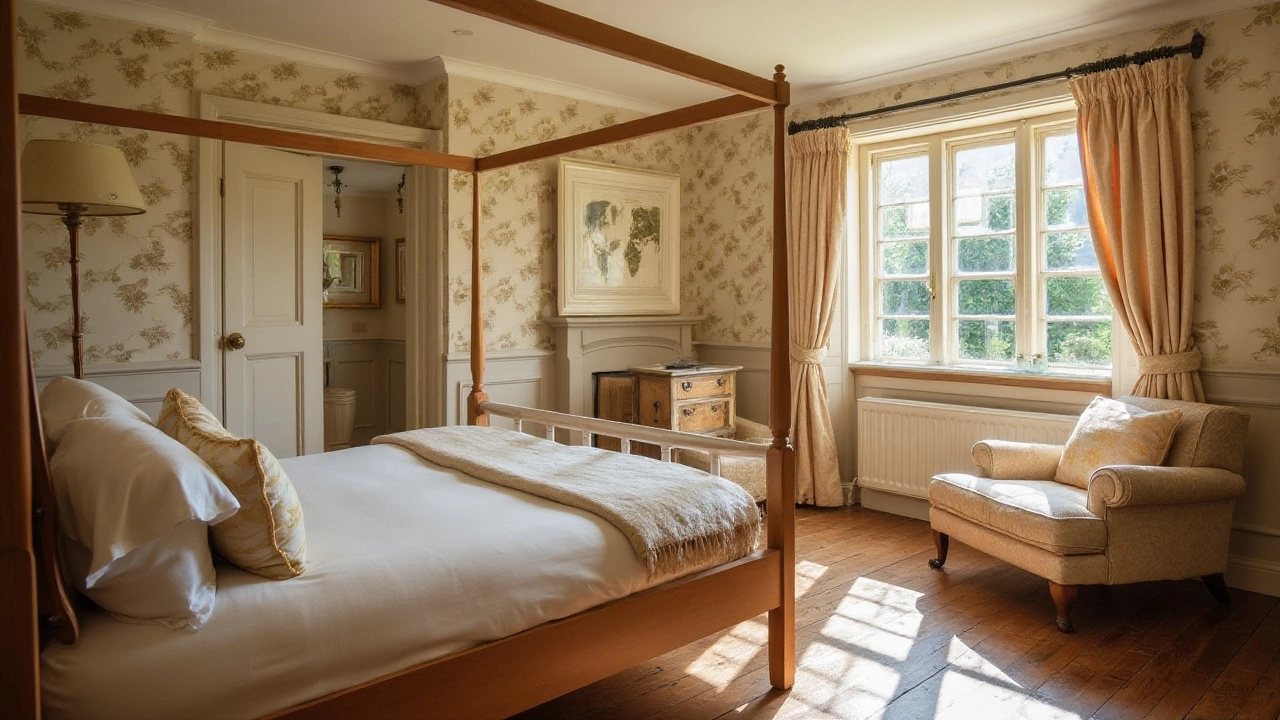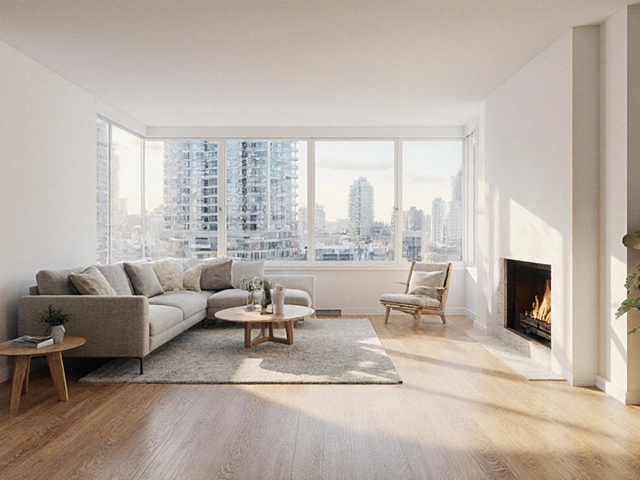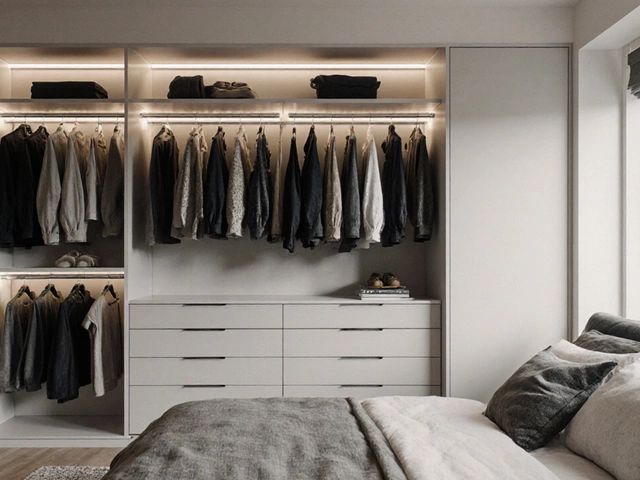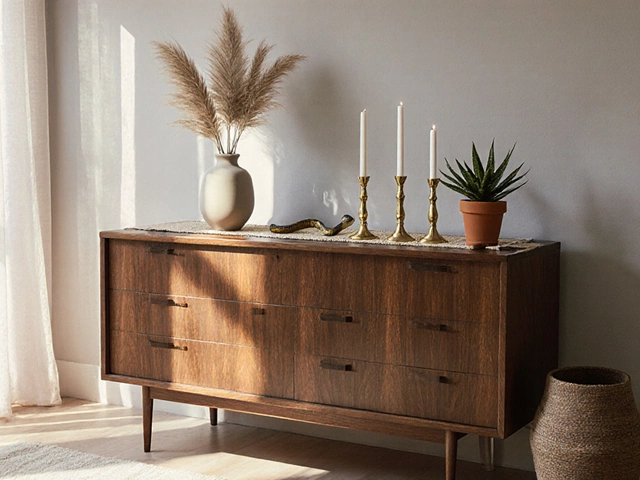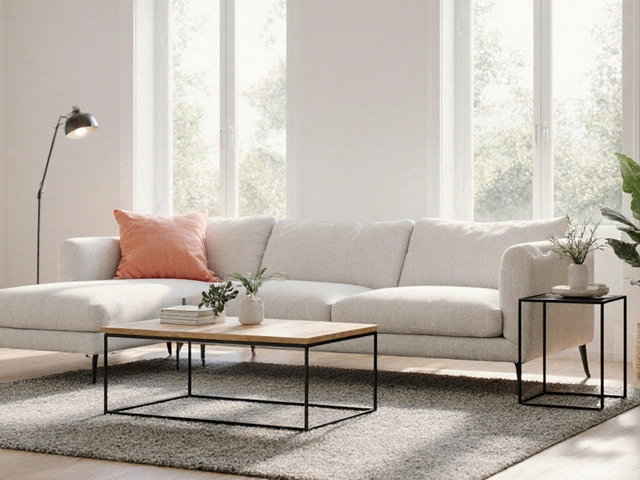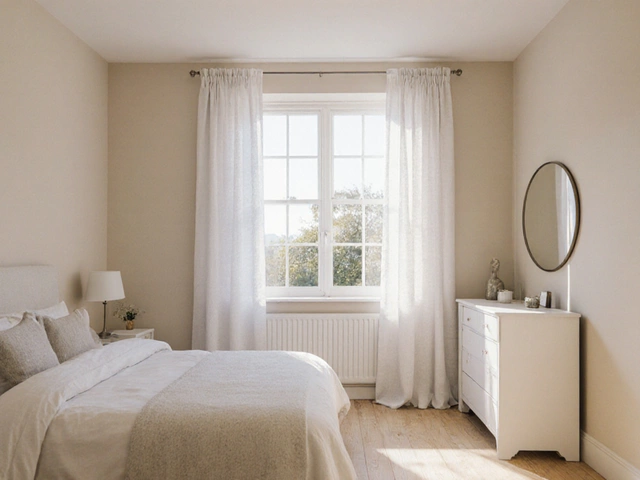Arranging the furniture in your bedroom isn’t merely about placing items randomly until things fit. It's an opportunity to create a sanctuary that both reflects your personality and serves your practical needs. Whether your space is grand or cozy, making smart decisions about where each piece of furniture goes can transform the room.
With creativity and a bit of guidance, you’ll find ways to navigate around any space constraints or layout challenges. The essence of personal comfort often comes from combining thoughtful design with the mood you wish to evoke, making your bedroom a tailored reflection of your tastes and lifestyle.
- Setting a Focal Point
- Measuring the Room
- Considering Entry Points
- Maximizing Natural Light
- Personalizing the Space
- Balancing Function and Style
Setting a Focal Point
Every well-designed bedroom starts with identifying a focal point, which acts as an anchor for the rest of the arrangement. Typically, the bed, being the largest piece of bedroom furniture, naturally assumes this role. Placing the bed in a way that it draws the eye upon entering the room is a simple trick that not only enhances visual interest but also brings a sense of balance and purpose. Opt for an attractive headboard or unique bedding that distinguishes the bed from the rest of the furniture. Aligning the bed with a captivating view, if possible, such as a window with a picturesque scene outside or a beautifully crafted feature wall, can elevate this effect.
Acknowledging the room’s architectural features can also guide you in deciding your focus point. For instance, a fireplace, if present, competes for attention and might persuade you to shift the focal attention from the bed. Avant-garde interior designer Nate Berkus once said,
"Your home should tell the story of who you are, and be a collection of what you love brought together under one roof."By that sentiment, don't shy away from using art, mirrors, or cherished personal collections above the bed or another strategic spot to elevate its prominence and tie the room's story together.
To achieve an organized and aesthetically pleasing setup, allocating space proportionately around the focal furniture enhances the comfort and flow of the room. The surrounding pieces, such as side tables or dressers, should complement the focal point without diminishing its impact. Keep an eye on symmetry, as it often brings a sense of harmony, which is soothing and essential in a relaxing space like a bedroom. If your room is large enough, consider including seating like a small lounge chair or a bench at the foot of the bed to balance the area effectively, while making your focal point even more inviting. A focused approach to furniture arrangement nurtures a cohesive atmosphere that is vital for rest and relaxation.
Measuring the Room
Taking the time to measure your bedroom is one of the most crucial steps in arranging bedroom furniture. Begin with a tape measure, notebook, and pencil, ready to jot down essential dimensions. The process involves measuring the room's length, width, and height. Don’t forget to also account for any architectural elements like windows, doors, and built-in closets. These elements can significantly impact where furniture can be placed. A larger room offers more flexibility in arrangement, but it is always the precision of measurement that dictates how well the pieces fit together.
After gathering your measurements, the next step is to sketch a floor plan. A scale drawing offers a visual representation of your space. Some prefer the traditional method of pencil and grid paper, while others might opt for digital tools or apps that allow easy manipulation of furniture pieces. Keep in mind that each piece of furniture comes with its own dimensions, and these should be recorded in your floor plan as well. Industry experts often suggest leaving at least 24 to 36 inches around the furniture to allow for easy movement.
During the planning stage, consider furniture function relative to the room’s purpose. The bed, being the focal point in any bedroom setup, should take priority in placement. As design icon Nate Berkus once said,
"Your home should tell the story of who you are, and be a collection of what you love."Think about how each piece aligns with both the functional requirements and the story you want your bedroom to tell.
Unexpected surprises, like uneven wall lengths and awkward alcoves, are common in many spaces and should not deter you. Knowing these dimensions ahead of time allows room for creativity in placement, such as incorporating custom or modular pieces that suit the unique layout of your room. In smaller rooms, opt for multifunctional pieces to maximize space usage effectively.
An interesting observation from a 2023 survey showed that individuals who measured their spaces before purchasing furniture were 75% more satisfied with the final arrangement. This underscores the importance of blending artistry with precise planning. As you navigate through the layout planning and placing of your furniture, remember that your bedroom is your personal space to unwind; it should spark joy and provide comfort with every step you take inside it.
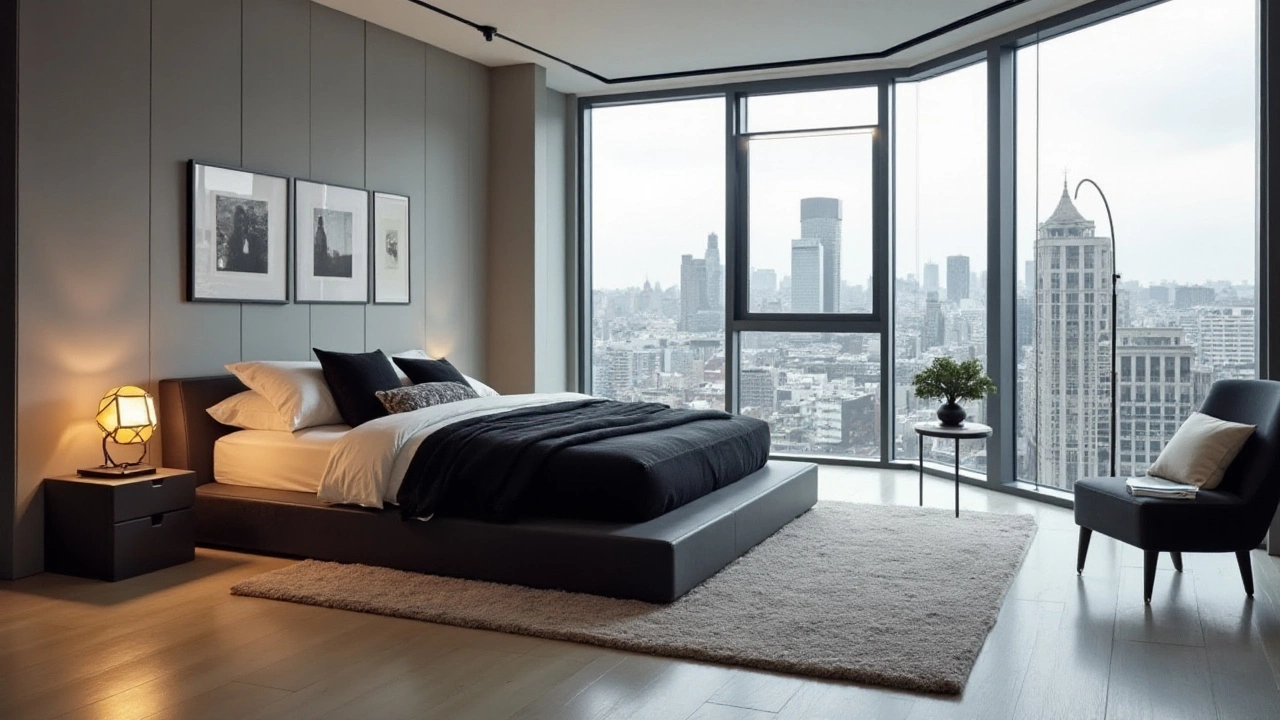
Considering Entry Points
When you first think about creating a layout for your bedroom, it's crucial to consider the entry points. Entrances and exits are not just functional necessities; they set the tone for how you and others experience the space. The positioning of bedroom furniture in relation to doors can significantly affect both the flow and perception of the room. A thoughtfully arranged room invites exploration and comfort from the moment you walk in. Avoid placing larger pieces like the bed or wardrobe directly in the path of an entrance as it can create a feeling of confinement, obstructing not just foot traffic but also hindering the room's natural harmony. This approach ensures that energy moves freely, helping contribute to a sense of openness.
It is often said that the way in which a room greets you indicates its core character. Designing around entry points can lead you to discover balanced and innovative arrangements. For instance, using mirrors near the entryway can not only amplify light but also create a perception of deeper space, which can be particularly beneficial in smaller bedrooms. A well-placed mirror reflects natural or artificial light, giving the room an airy feel. A significant benefit of arranging furniture with entry points in mind is that it naturally creates designated pathways. This can simplify decisions around where to place smaller pieces like chairs or decorative items, reducing clutter and enhancing the room’s interior design.
While considering entry points, it might be worthwhile to remember a guiding principle from renowned interior designer William Morris: "Have nothing in your houses that you do not know to be useful, or believe to be beautiful."
His philosophy emphasizes the importance of intention and purpose when designing spaces. This applies directly to how furniture should complement the lines and access points of a room—not obstruct them.If you’re of a tech-savvy mindset, utilizing tools to virtually map your room could provide valuable insights into spacial configurations before you even lift a piece of furniture. Floor planner apps and 3D modeling programs bring ideas to life, allowing you to experiment with layouts and ensure you're making the most of every square foot.
In sum, by embracing strategy and creativity in considering entry points, you're not just designing a room; you're setting the stage for daily living experiences and defining the feel and functionality of one of the most personal spaces in your home. Harmonizing these elements promotes a soothing environment, which can significantly impact your wellbeing and satisfaction with the home you come back to each day.
Maximizing Natural Light
Your bedroom is your personal retreat, and the way you harness natural light can dramatically alter its ambiance. When planning your furniture layout, consider how sunlight streams through the room at different times of the day. Placing your bed in a way that lets you bask in the morning light can invigorate your mornings, while ensuring the room remains cozy and inviting in the evenings. The benefits of maximizing sunlight aren't merely aesthetic. Studies have shown that increased exposure to daylight can boost mood and improve sleep quality. If possible, aim to have windows unobstructed by large furniture pieces that could block light. Instead, opt for lower-profile items like bedside tables or benches beneath windows, allowing unfiltered sunlight to cascade through the room.
Be mindful of the color palette in your bedroom, as lighter shades tend to reflect and amplify natural light, while darker tones can absorb it, creating a more subdued atmosphere. Mirrors are a classic trick of the trade when it comes to reflecting light. A strategically placed mirror can effectively capture daylight and diffuse it around the room, enhancing the sense of space and brightness. According to the renowned interior designer, John McDonald, "Utilizing mirrors isn't just about visually enlarging a space—it's about punctuating the light to bring life into every corner."
John explains, "The play of light can transform the ordinary into extraordinary."
Choosing the right window treatments can also make a big difference. While heavy drapes offer privacy and a cozy feel, they can heavily filter the incoming light. Consider layering with sheers or lighter materials to balance privacy with illumination. If the space allows, installing skylights or light tubes can introduce overhead light, effectively increasing brightness without sacrificing privacy. Remember that every piece of bedroom furniture should be positioned to not only capture practical use of the light but to also showcase your room's best features. Briefly stand in different parts of the room during various times of the day to observe the interaction of light and shadow and adjust accordingly. With these strategies, your bedroom can become not just a personal haven, but also a radiant space that aligns perfectly with Mother Nature’s cycle.
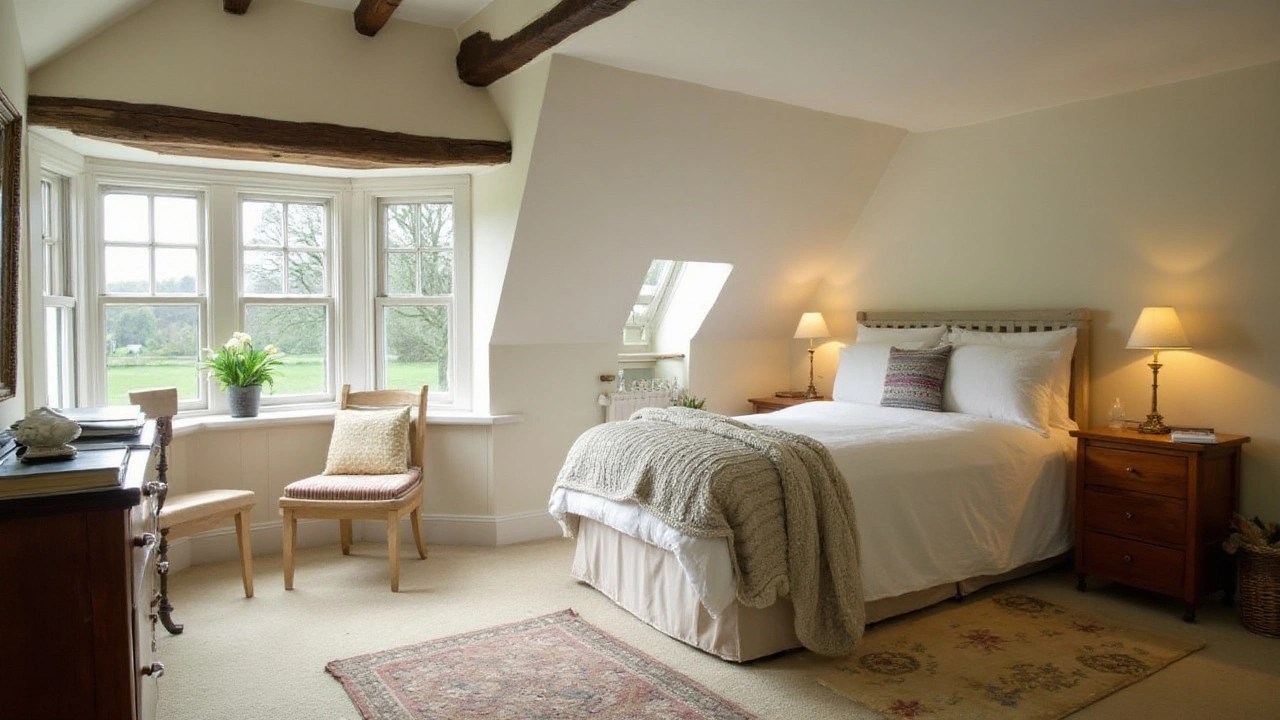
Personalizing the Space
Creating a bedroom that feels uniquely yours goes beyond the basics of furniture placement. It's where personal taste meets functionality, and the possibilities are as limitless as your imagination. Begin by reflecting on what makes you feel most at home. Is it a particular color scheme or a collection of cherished keepsakes that bring a sense of peace? Maybe it’s incorporating textures that speak to your comfort preferences. Personalization is integral to making any space truly inviting and uniquely yours. Your bedroom is your space, and it should reflect your experiences, aspirations, and comforts.
One pivotal way to personalize your bedroom is through color choice. The colors you select have a profound impact on your mood and energy levels, so selecting hues that resonate with your inner self is key. A tranquil blue might soothe your evenings, or a warm shade of yellow could energize your mornings. Different colors peek their effects subtly or boldly, offering a realm of emotional and visual personalities to explore. Bedroom furniture pieces can follow suit, whether they act as a brilliant accent or blend seamlessly.
Your bedroom is also a tapestry where an array of textures and materials can express different dimensions of your style. Introduce layers with varying fabrics like knitted throws, velvet cushions, or sleek satin bedspreads. This woven complexity can add depth and coziness, forging an element-filled scene that beckons relaxation. Walls and floors shouldn't be neglected. Patterns or textured wallpapers, for instance, serve to create movement where there might be stillness, while a plush or rustic rug could ground the room, making it a true personal haven. Sometimes, a single piece of artwork or a unique bedside lamp can make a world of difference.
Consider the significance of lighting within the space. Lighting plays both a functional and aesthetic role, from the gentle whispers of task lighting for late-night reads to the ambient glow of a chandelier that embellishes the room with character. Maximizing natural light can amplify an open, airy effect, imbuing a great breadth of freedom in any area. According to interior designer Nate Berkus, "Your home should tell the story of who you are and be a collection of what you love." Bringing in beloved items, cherished photographs, or curated collections can truly make the bedroom feel owned.
Innovative storage solutions are another noteworthy aspect of personalizing your space without compromising its heartbeat. Consider vertical storage solutions, such as shelves or hooks, which afford you not only room for decoration but also practical usage. Utilizing hidden storage elements in your furniture arrangement can ensure the room maintains clarity—this is especially beneficial in smaller bedrooms that require every inch to count. An item as simple as a bed with built-in drawers or a headboard with shelving can effectively mitigate clutter while staying stylishly in character.
And don't forget to innovate with tech-friendly enhancements that integrate smartly into the existing design. From programmable lighting that shifts with the time of day to automated blinds that recalibrate according to the sun's angle, these modern touches can significantly upgrade your lifestyle experience within the room. An academic survey found that such subtle tech elements contribute to an overall increase in comfort and satisfaction within personal spaces, proving that technology can be just as personalizing as any tangible accessory.
Balancing Function and Style
Creating a harmonious balance between function and style in your bedroom can feel like an intricate dance. It's not just about what looks nice or what fits best in the space you have, but finding the intersection where both meet effortlessly. Start by thinking about your bedroom not only as a place to rest but as a reflection of who you are. You might prioritize a workspace if you often find yourself working late into the night, or perhaps you need a reading nook if you love unwinding with a good book. Whatever your lifestyle needs, ensuring that your furniture doesn't just occupy space but serves a purpose is key to achieving that balance.
An essential aspect in this balancing act is choosing furniture that serves multiple purposes. A bed with built-in drawers can double as storage space, or a bench at the foot of the bed can turn into extra seating as needed. It's about finding designs that offer adaptability without sacrificing the integrity of your space's aesthetic.
"Style is a reflection of your attitude and your personality." - Shawn AshmoreThis quote encapsulates the essence of intertwining function with personal style
When considering the furniture arrangement, focus on the flow of movement through the room. A well-organized space will allow you to move gracefully from the doorway to the bed without dodging around unnecessary obstacles. Consider the placement of larger items like the bed or wardrobe first, then see where smaller elements like side tables and lamps will fit. Experiment with layouts that maintain open pathways while still expressing your unique style choices, such as bold patterns or quirky accent pieces.
Delve into materials and textures that not only appeal visually but hold up for practical daily use. Durable fabrics for seating or scratch-resistant surfaces for work areas sometimes sacrifice what we initially find ‘ideal’ for something more suitable over time. A beautiful antique vanity, for instance, can add a classic style, but ensure its presence is paired with modern functionalities to keep it relevant and useful. Below is a simple table showing, for instance, common materials and their functional benefits:
| Material | Functionality |
|---|---|
| Wood | Timeless and durable, matches various styles |
| Metal | Sturdy, ideal for frames and bed posts |
| Glass | Gives an illusion of more space, easy to clean |
Incorporate trends but never at the expense of comfort or personal taste. It’s about curating a space that feels as good as it looks. Remember, the current minimalistic trend emphasizes clean lines and less clutter which could be embraced by removing unnecessary items, yet keeping those that speak to who you are. It’s entirely possible to have a stylish space that encourages relaxation and efficiency in everyday tasks.
